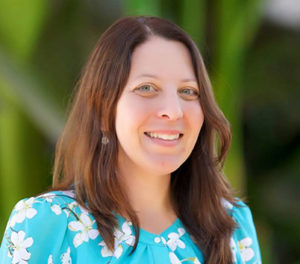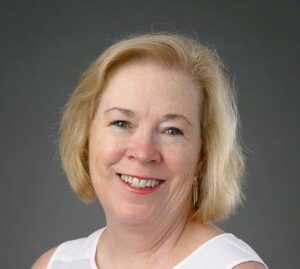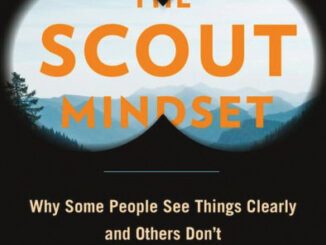

By Caroline Volpe, President, Compass Market Research LLC, Schwenksville, Pennsylvania, caroline@compassmarketresearch.com and Colleen Welsh-Allen, Vice President, Qualitative Research, Kantar Health, Cary, North Carolina, colleen.welsh-allen@kantar.com
Pharmaceutical research is so rewarding—you’re contributing to the greater good of your communities—but it is also a very demanding industry to work in. In this article, we share the rewards, challenges, and scenarios in this field, so that you too might explore expanding your business into the vibrancy of pharma research.
Some Background
Years ago, the pharmaceutical industry thrived and grew on blockbusters (think Viagra, Zantac, and Valium). Not only did they have these blockbusters, but they were on the market for years with little or no competition. As a result, several therapeutic categories were less complex, allowing moderators to get their experience. Now, some therapeutic areas like diabetes, which used to be an entry point for many moderators, have become such a crowded market that keeping up can feel like going back to college. Today, blockbusters can occur, like Keytruda (cancer), but they usually have competition right on their heels, such as Opdivo (cancer). There aren’t many areas of unmet need, so pharma has turned to rare cancers and rare diseases as some of the last frontiers, but these are tough therapeutic areas to get to know and sound knowledgeable about with a client.
Overcoming Challenges with Pharma Research
Even an experienced moderator can find it hard to break into pharmaceutical moderating. Most of the larger firms like Kantar Health want not just moderation experience but therapeutic and health care experience. Getting that experience has been getting harder.
Understanding the Language
We deal routinely with complex topics as well as sensitive topics, and most often from an outsider’s perspective, as most of us are not medically trained.
Like many industries, health care has its own language and a significant number of acronyms and abbreviations. We never call a physician specialty by the full name. Thankfully, those abbreviations are generally easy to figure out once you get to know the method of referring to them: ENDO is endocrinologist, POD is podiatrist. Clients often have their own unique abbreviations as well.
Books on medical abbreviations can be helpful, and Google is an invaluable resource. A quick internet search of medical acronyms will bring up a host of potential websites that define the variety of medical abbreviations. In terms of client abbreviations, just ask them—but also remind them that you will not use these abbreviations during the research as the respondents will not understand them.
Understanding the Conditions
Once you get past the basics, you will also need to know the details around the various therapeutic areas. We are almost always the outsiders as medical researchers because rarely will we have any of the experiences or conditions of our respondents. Most medical researchers do not have medical training, but they need to learn the medical terms and understand the diagnoses, treatments, and management of the conditions they are talking to the respondent about almost as if they do.
This challenge requires dedication and time. Coming up to speed for a new project can take hours of research. Each researcher has their own approach to this. Over time, researchers learn techniques to make this process easier, but it still takes time to really understand a therapeutic area. For this, you need a reliable source of information to get up to speed on the specific therapeutic area. Some sources include the pharmaceutical website (but you must remember that this is biased toward their key selling message), the PI (package insert), and general websites (i.e., Medscape, WebMD, disease-focused associations, health care system websites).
While you could make an argument that having less understanding might also decrease some degree of bias, those you work with (including the participants) will expect you to understand the basic medical language, acronyms, and abbreviations. Therefore, it is key to make sure you understand the disease from both the patient and health care provider perspective.
Dealing with Difficult Topics
We deal with sensitive topics like incontinence and sexual dysfunction to devastating topics such as interviewing terminal cancer patients. In those cases, we must be empathetic but stay the unbiased journalist. We are there to listen and report their stories, but it can be hard at times not to be affected.
If you are doing these interviews, prepare yourself mentally and emotionally, and try to stay as present as you can during the interview.
Unique Legal Requirements
This industry has some unique legal requirements. Every company has its own adverse event training, which requires the researcher to report any issues that a respondent reports regarding a medication or device manufactured and marketed by the sponsoring company. The company-specific certifications are obtained the first time you work with the company, and then they need to be renewed annually. In addition, many larger companies, like Kantar Health, also require unique certifications like BHBIA (British Healthcare Business Intelligence Association)—not only of their employees but of their independent researchers as well. BHBIA certification is best obtained when it is requested, given the cost associated with it, and not every company requires it. In addition, if you do hear of an adverse event, it can take up to an hour to do the paperwork, depending on the complexity of the reported event and the company’s processes, and it is time sensitive.
The Physician Payments Sunshine Act (aka the Sunshine Act) mandates that health care practitioners report any income they receive from pharma companies including honoraria from research. There is an exception—if we can keep the study double-blinded, we are exempt from this reporting. However, some health care companies still require it, particularly if we use a customer list, even though there is an exception. Also, restrictions in many states on HCP (health care professional) participation in market research are shrinking the pool of potential respondents, leading to more expensive and harder recruits, which is one of the reasons that this industry adopted virtual methodologies years ago.
Companies that are ISO certified, like Kantar Health, add more red tape with tight requirements of documentation, observer agreements, and even more adverse event forms that need to be completed in case of audits by individual pharma clients and ISO auditors. As an independent, Caroline is not ISO-certified; however, she is still obligated by some of the companies she works with to meet their standards to ensure they are compliant.
The BHBIA can be a useful source for learning about the requirements of dealing with adverse events; however, the data privacy issues are an ever-changing target which requires constant research and industry awareness.
Competition
While not unique to this industry, there is intense competition in this space. Not only do many people have established careers in this space, but many people want to work in health care research. In addition, the larger companies have extensive procurement processes and preferred provider lists.
Logistics
While we both focus on pharma research, we’ve been told that two things about pharma research are unique from other industries in terms of project execution.
First, discussion guides are notoriously too long. It is not unusual as a moderator to have a sixty-minute discussion guide that could legitimately take ninety minutes. The researcher is often challenged with having to navigate the guide to cover the key topics in the allotted time. We both can say from experience that pushing back rarely works, and you may earn a reputation of being difficult. Instead, we focus on treating the guide as a guide and allowing the objectives to help us navigate it. We also try to understand in advance of the research which questions are critical for the client. This can require a bit of detective work, because if asked directly, clients will say they are all important.
Another logistical difference is that timelines can be longer as the interviews tend to be spread out over a longer period of time. This is not true for every study, but it is not uncommon either. There are a few drivers of the longer field periods.
- Recruitment can be difficult. In some cases, we are looking at very niche targets, and we simply need to find the individuals.
- We must work around physicians’ schedules.
- Reschedules are not unusual. Physicians may have an emergency necessitating a last-minute reschedule, and patients may not be having a good day due to their disease.
Why Even Consider Going into Pharma?
There’s a saying that health care is recession-proof, and it is—to a degree. After the last year, we would say health care is pandemic-proof as well. Pharma research did not take even a minor hit during the pandemic. In fact, Kantar Health’s qualitative business was over double what it was the year before. Caroline did not see the same growth, but her business did not see a decline and remained comparable to the previous year.
People still get sick and need medications and medical devices regardless of the state of the economy. The pandemic actually opened up new areas for research because health care companies wanted to know how COVID-19 was affecting their populations of interest, how clinical trials could continue during shutdown, and how to deploy their sales forces when doctors were not seeing sales representatives, just to name a few. Being a health care researcher is good insurance against economic downturns.
Also, pharma long ago adopted virtual methodologies, particularly telephone and webcam interviews and groups, while health care is not always the quickest to adopt new methodologies. Caroline can attest that she still has teams she works with that consider bulletin boards to be “new.” However, the small universes that we are often trying to recruit from dictated a move to virtual research years ago. While every pharma researcher’s mix is different, prior to the pandemic, Caroline’s mix was close to 75 percent virtual and 25 percent in-person, and Colleen agreed that this is very similar historically at Kantar Health.
As a pharma researcher, you also get to contribute to the greater good, although it can get lost in the day-to-day issues of being a researcher. Sure, pharma companies are out to sell their medications and make a profit like any other company, but you as the health care researcher get the unique chance to be the voice of the patients and health care practitioners—to paint a picture and humanize what is really happening. To get to show a client the journey of a child patient, with a rare disease, and their parents is a humbling experience.
Pharma research is unique compared to other fields of research. Pharma is never boring. Colleen works in up to twenty different therapeutic areas a year. Caroline also sees quite a bit of variety in the therapeutic areas in which she works. Added to the mix are the different types of products—oral medications, injectable/intravenous therapies, and medical devices. This variety keeps both Caroline and Colleen on their toes. As noted above, the emphasis pharma companies place on different therapeutic areas (the hot areas of research) changes. Years ago, it was hypertension and high cholesterol, and today it is cancer and rare diseases. Because of the frequently changing landscape, we can never really sit back on our laurels or previous work because clients are always looking for experience in the disease on which they want research conducted.
Some of Our Most Interesting Projects
As mentioned previously, some research studies are uneventful, but others stay with you as a researcher long after you complete them—either the project as a whole or specific stories that your respondents shared.
Caroline’s Examples
I did a bulletin board project that explored the role of oncology nurses in the care of individuals being treated with intravenous therapies. As this project is several years old, those treatments were primarily chemotherapies. While we learned a lot about how important oncology nurses are in driving decisions around treatment decisions, what really stuck with me were the stories. These nurses became personally connected to their patients. They attended birthday parties, christenings, weddings, and other family events of their patients. However, the story that stuck with me the most was shared by a nurse with a female patient in hospice care who had a 5-year-old daughter. Knowing her time was short, the woman asked the nurse to help finalize her funeral plans and help get her daughter home to her family in the Ukraine. The nurse was able to put her in touch with individuals who helped her.
I did a study in the area of HIV where we wanted to understand why individuals diagnosed with HIV did not take treatment or delayed initiating treatment for years. While the variety of stories I heard from both the patients and the case managers were memorable, what makes this project stand out as one of my favorites is the impact it had. At the end of the study, we ran a large workshop to brainstorm the patient services that could be offered to help overcome some of the barriers to patients initiating treatments.
My final example is a packaging test that was done remotely. I shipped the packaging to the physicians and asked them to video-record themselves opening and preparing the product for use. The feedback received from this exercise was blunt and very helpful. The company could do nothing to change the packaging design, but we learned a lot about what they needed to provide to ensure the packaging and product could be used successfully.
Colleen’s Examples
I did a study on alopecia areata. This was definitely one of the most rewarding projects I have done. I was honored to be able to hear the stories of patients with this disease and the implications alopecia had on their lives, not just from a self-image perspective, but how it affected their ability to find and keep work and have relationships, as well as how it affected their mental health and overall image in society. To be able to bring these stories to my client and know it might impact future therapies is one of the reasons I stay in pharma market research.
Other examples include the research we are doing at Kantar Health in rare diseases. Seventy-five percent of the people affected by rare disease are children, and the path to diagnosis is often long and arduous. Being able to shine a light on what these families go through and how they deal with their daily struggles is often sad but also rewarding.
Interested?
Here are our tips to best enter pharma market research and be successful:
- Look for studies that are easier points of entry given the level of detail that you may need to know about a therapeutic area.
- Communication studies.
- Patient research and not HCP (health care professional) research.
- Subcontract with another health care moderator to get experience.
- Go after smaller companies that cannot afford larger vendors like Ipsos and Kantar Health.
- Highlight a unique skill set that sets you apart, such as expertise in bulletin boards or communities, in-home or virtual ethnography, biometrics, or behavioral science.
- Stay away from oncology and rare diseases at first. These are the most difficult therapeutic areas with a lot of detail to learn.
- If working as a subcontractor, get a good briefing and insist on being at the kickoff and all preliminary meetings if possible.
- Display confidence at all times.
As committed health care researchers, we are happy for the opportunity to tell other qualitative researchers about an industry where we have dedicated our careers. We each have unique perspectives as we have followed different paths to this specialty and have continued on different paths during our careers. Colleen started her health care career as a registered nurse before transitioning to research. She spent time as an independent researcher earlier in her research career and now works as vice president of qualitative research at Kantar Health. Caroline started in health care market research upon graduating with her master’s degree. She spent 14 years working with smaller research firms before becoming an independent researcher.




